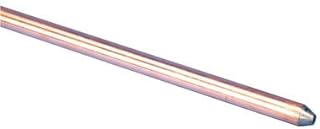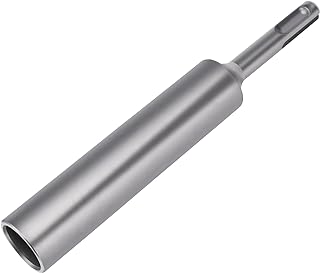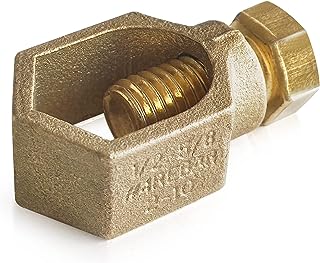When it comes to grounding a mobile home, understanding the process is crucial for safety and stability. Whether you’re a new owner or looking to relocate, knowing how to properly ground your mobile home is essential. By following the necessary steps, you can ensure that your home is secure and meets all regulations. In this guide, we will walk you through the steps involved in how to ground a mobile home effectively, providing you with the knowledge needed to complete the task confidently.
Key Takeaways
Proper grounding of a mobile home is crucial for safety and electrical functionality.
Use appropriate materials like grounding rods, clamps, and wires for effective grounding.
Follow step-by-step instructions carefully to ensure the correct grounding of your mobile home.
Best practices include checking local codes, consulting professionals if needed, and testing the grounding system periodically.
Troubleshoot grounding issues promptly to avoid safety hazards and electrical problems.
Understand the importance of the grounding process in protecting against electrical shocks and ensuring the proper functioning of electrical systems.
Importance of Proper Grounding
Electrical Safety
Proper grounding is essential for ensuring the safety of a mobile home. Grounding helps to prevent electrical shocks and fires by providing a path for excess electricity to flow into the ground.
Improper grounding can lead to serious risks, including electric shocks to occupants, damage to electrical appliances, and even fires. Without proper grounding, the risk of voltage surges and short circuits increases significantly.
Compliance with Regulations
Following the correct grounding requirements is crucial for maintaining a safe living environment in a mobile home. Ensuring that the home is properly grounded reduces the chances of electrical hazards occurring.
Compliance with grounding regulations not only protects the occupants but also prevents damage to electronic devices and appliances. It is important to use the right materials, such as copper grounding rods and bolts, to establish a secure connection to the earth.
Grounding Mobile Homes Overview
Key Components
Grounding a mobile home involves several key components. Firstly, a grounding rod is essential to provide a path for electricity to safely flow into the ground. Copper wiring connects the grounding rod to the electrical system of the mobile home, ensuring proper grounding.
Significance of 200 Amp Service with 4 Lugs
A 200 amp service with 4 lugs in the panel is crucial for mobile homes as it allows for higher electrical capacity and better distribution of power throughout the home. This setup ensures that the electrical system can handle the demands of modern appliances and electronics without overloading.
Connection Between Neutral, Ground, and Breaker Panel
The neutral wire in an electrical system carries current back to the power source and helps stabilize voltage levels. The ground wire provides a safe path for electricity in case of a fault or surge. The breaker panel acts as a control center, tripping circuits when necessary to prevent electrical hazards.
Proper connection between the neutral, ground, and breaker panel is vital for maintaining a safe and efficient mobile home electrical system.
Incorrect wiring or lack of proper grounding can lead to electrical malfunctions, fires, or even electrocution.
Grounding Rod Driver
A grounding rod driver aids in the installation of a grounding rod by providing the necessary force to drive the rod into the ground efficiently, ensuring a secure electrical connection. Without it, manually hammering the rod can be labor-intensive and less precise, risking improper grounding and compromising electrical safety.
To purchase a driver visit this link.
Materials Needed for Grounding
Essential Materials
Copper grounding rods: These rods are crucial for providing a direct path to the ground, ensuring safety by dissipating excess electrical current.
Grounding clamps: Used to securely connect the copper grounding rods to the grounding wire, maintaining a reliable connection.
Grounding wire: Serves as the conductor that connects the mobile home’s electrical system to the grounding rods, preventing electrical shocks.
Purpose of Each Material
Copper grounding rods: Facilitate the dissipation of electrical charges into the earth, safeguarding against potential hazards like lightning strikes or power surges.
Grounding clamps: Ensure a strong and stable connection between the grounding rod and wire, preventing disruptions in the grounding system.
Grounding wire: Acts as a pathway for directing electrical currents safely into the ground, minimizing the risk of electric shock incidents.
Importance of Wire Gauges and Types
Using copper wiring with appropriate gauges is vital for effective grounding. Thicker wires (lower gauge numbers) offer lower resistance and better conductivity.
Employing stranded copper wire enhances flexibility and durability, crucial for enduring environmental factors and ensuring long-term effectiveness.
Step-by-Step Grounding Instructions
Running #6 Bare Copper Wire
To begin grounding a mobile home, run a #6 Bare copper wire from the main electrical panel to the outside. This wire serves as the primary conductor for grounding.
Connect one end of the wire to a metal pipe or a grounding rod buried near the home’s foundation. This connection ensures proper grounding and safety against electrical surges.
Connecting Ground Bar to Neutral Bar
Next, connect the ground bar in the electrical panel to the neutral bar at the meter/service disconnect. This step is crucial for establishing a solid electrical ground within the mobile home.
Ensure that all connections are secure and tightened properly to prevent any loose wiring issues that could compromise the effectiveness of the grounding system.
Securely fasten all wires using appropriate connectors.
Check for any signs of wear or damage on the wires and replace if necessary.
Completing these steps meticulously will ensure that your mobile home is safely grounded, providing protection against electrical hazards and ensuring optimal functionality.
Check out our article: Mobile Home Feeder Cable Power: Essential Guide
Best Practices in Grounding
Proper Location
When grounding a mobile home, it is crucial to place the ground rods strategically. The ideal location is near the main electrical panel. This positioning ensures optimal safety and efficiency in the grounding system.
Metal Water Piping Bonding
Bonding metal water piping in a mobile home is another essential step. It involves connecting all metal piping to the grounding system. This process prevents the risk of electric shocks and helps maintain a consistent ground potential throughout the structure.
Separation Maintenance
Maintaining the separation between neutral and ground conductors within the specified distance is paramount for safety. By adhering to this practice, you reduce the chances of electrical hazards and ensure that the grounding system functions effectively.
Read our article: Mobile Home Power Pole
Troubleshooting Grounding Issues
Common Problems
Mobile homeowners often face wiring issues that can lead to grounding problems. One common issue is improper wiring connections, causing a weak or ineffective ground connection. Corrosion on wires or terminals can disrupt the grounding system, impacting its efficiency.
Troubleshooting Tips
To address grounding issues, start by inspecting all wiring connections for any signs of damage or corrosion. Ensure that all wires are securely connected and free of wear. Utilize a multimeter to test the continuity of the ground wire to identify any breaks or interruptions in the circuit.
Testing Grounding System
After addressing potential wiring issues, it’s crucial to test the effectiveness of the grounding system. Use a ground resistance tester to measure the resistance between the ground rod and your mobile home. A low resistance reading indicates a good ground connection, while a high reading suggests an issue that needs further investigation.
Buy grounding rod clamps here. Shipped directly to your doorstep.
Understanding the Grounding Process
Grounding Process
Grounding a mobile home involves connecting it to the earth to prevent electrical shock and protect appliances. Proper grounding ensures safety by providing a path for electricity to flow harmlessly into the ground.
Role of the Disconnect
The disconnect on the pole outside serves as a safety measure, allowing you to cut off power before entering the mobile home. This disconnect is crucial for maintenance and emergencies, ensuring that no electricity flows into the home.
Bonding Ground Wire vs Neutral Wire
In the panel, bonding the ground wire connects it to metal water pipes or other grounding electrodes, while bonding the neutral wire ties it to the electrical system’s neutral point. Ground wires protect against electrical faults, while neutral wires carry return current.
Addressing Common Concerns
Compliance with Local Regulations
Ensuring compliance with local regulations is crucial when grounding a mobile home. Building codes vary by area, so it’s essential to consult with local authorities or an electrician familiar with the requirements in your region.
Remember, following the correct guidelines not only keeps you safe but also prevents potential legal issues down the road. Check with your municipality for specific rules and regulations regarding mobile home grounding.
Closing Thoughts
Ensuring your mobile home is properly grounded is crucial for your safety and the longevity of your electrical system. By following the step-by-step instructions outlined here and adhering to best practices, you can mitigate potential issues and address common concerns effectively. Understanding the grounding process empowers you to troubleshoot any problems that may arise, giving you peace of mind knowing your home is secure.
Take charge of your mobile home’s safety today by implementing these grounding techniques. Your proactive approach will not only protect your property but also safeguard against electrical hazards. Stay informed, stay safe!
Frequently Asked Questions
How important is proper grounding for a mobile home?
Proper grounding for a mobile home is crucial as it ensures safety by protecting against electrical shocks and fires. It also helps in dissipating excess electrical energy, safeguarding your appliances and electronics.
What materials are needed to ground a mobile home?
To ground a mobile home, you will need grounding rods, clamps, wires, and a grounding electrode conductor. These materials work together to create a safe pathway for electrical currents to follow in case of a fault.
Can you provide step-by-step instructions for grounding a mobile home?
Determine the location for the grounding system.
Install the grounding rods securely into the ground.
Connect the rods using clamps and wires.
Attach the grounding electrode conductor to the main panel.
Test the system thoroughly to ensure proper functionality.
What are some best practices to follow when grounding a mobile home?
Always consult local building codes and regulations before starting the grounding process. Ensure all connections are secure and tight to prevent any faults. Regularly inspect and maintain the grounding system to guarantee its effectiveness over time.
How can I troubleshoot common grounding issues with my mobile home?
If you experience issues with your mobile home’s grounding, check for loose connections, corrosion on components, or damaged wires. Testing the continuity of the system using a multimeter can help identify any faults that need addressing promptly.
Check out these articles;
Power Your Mobile Home: Best Generator Options




